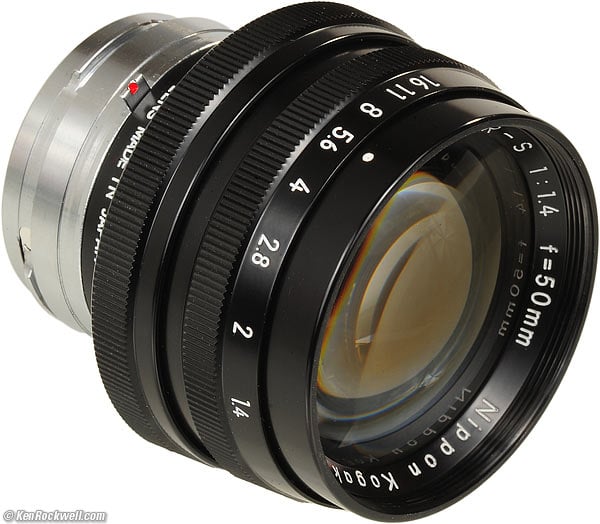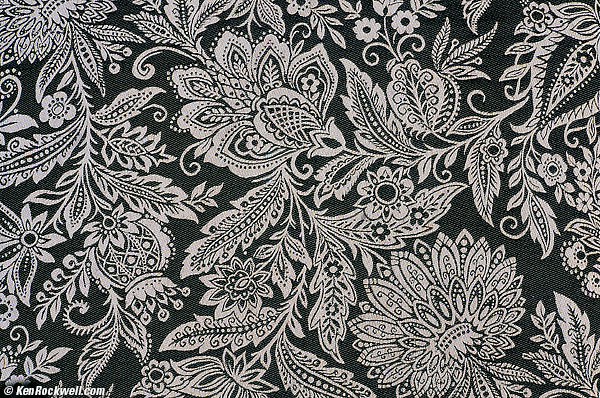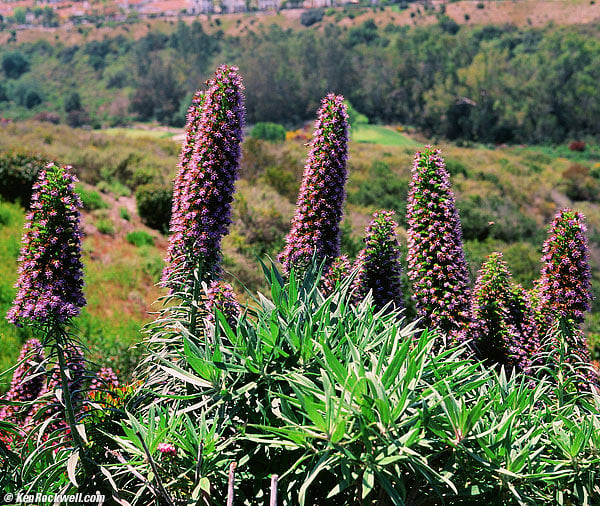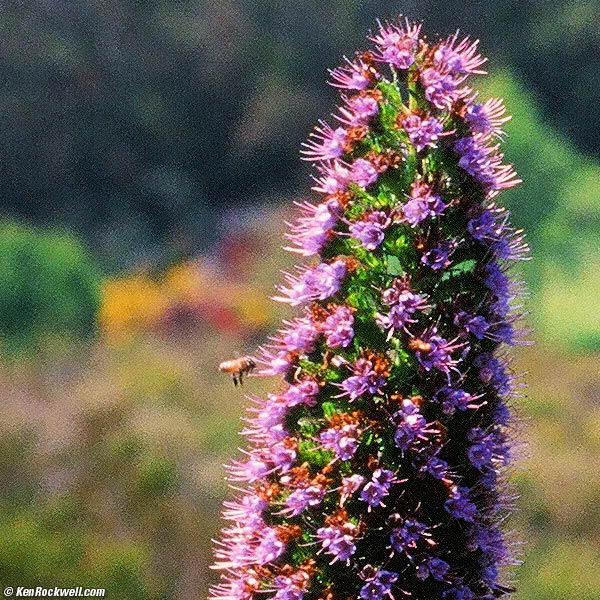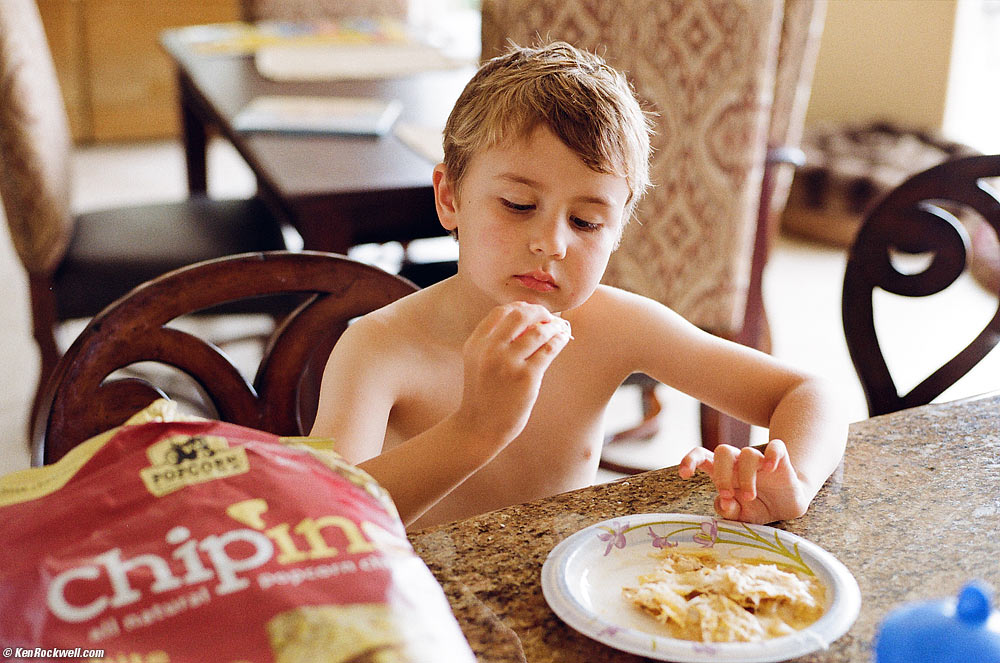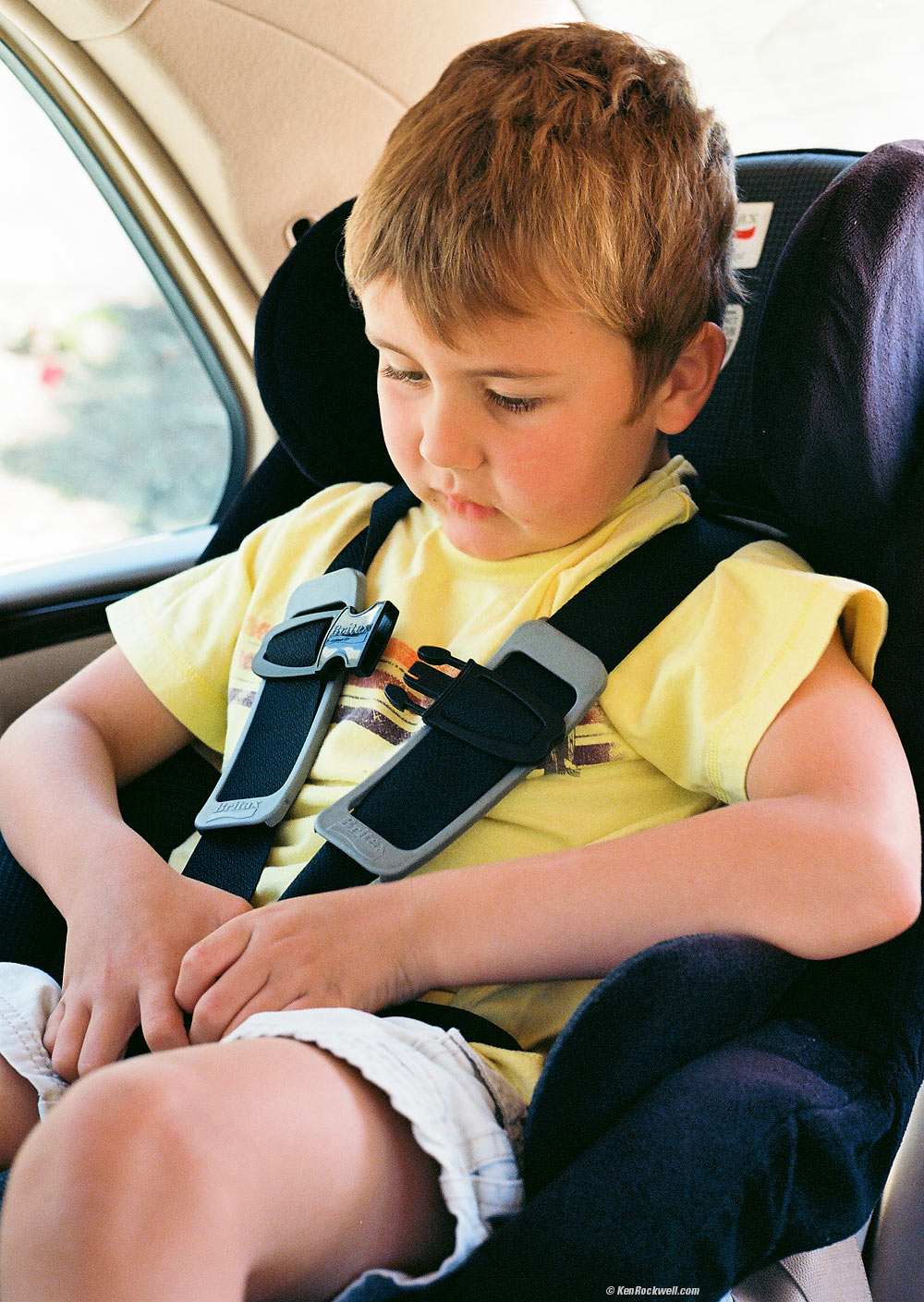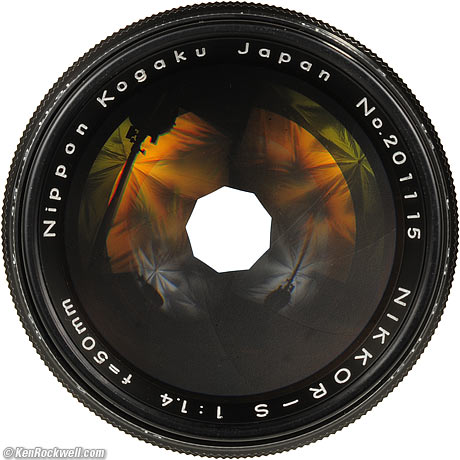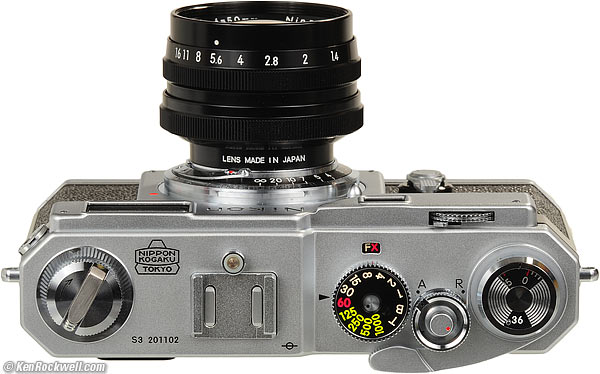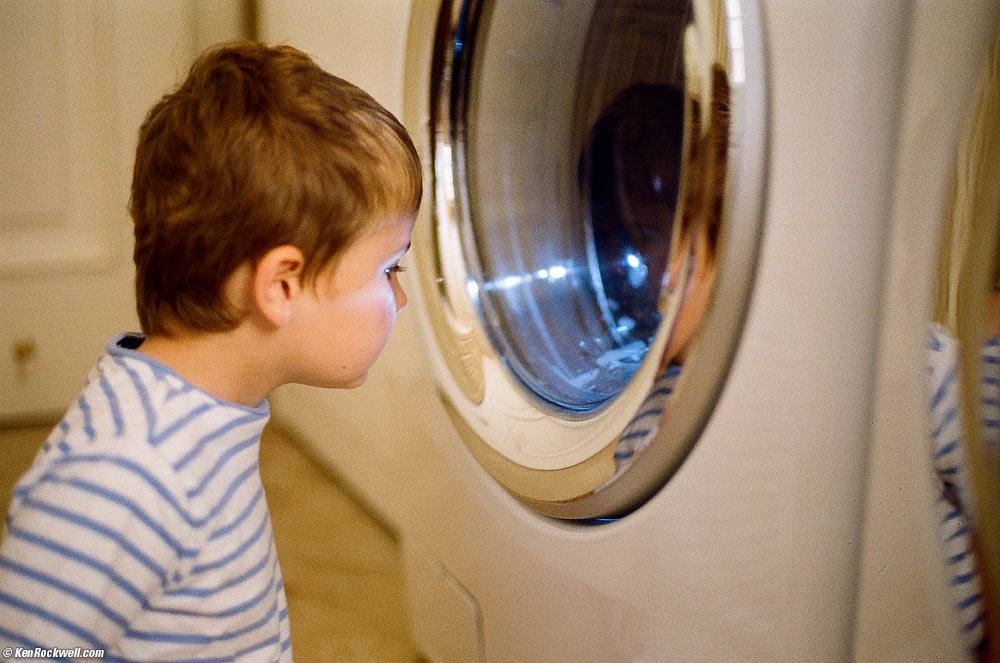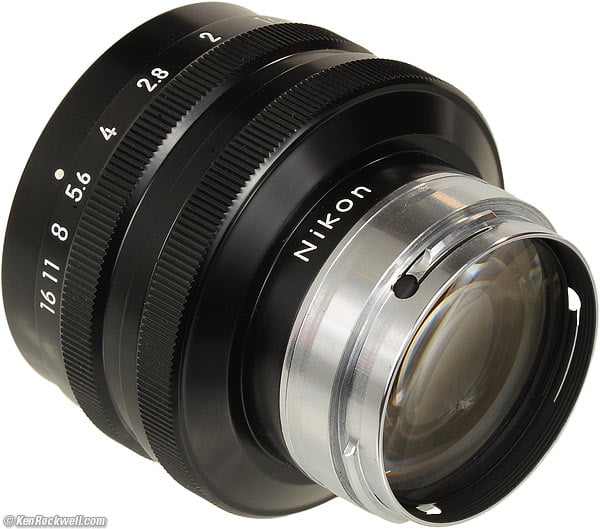Home Donate New Search Gallery Reviews How-To Books Links Workshops About Contact
NIKKOR-S 50mm f/1.4
Year 2000 Limited Edition (2000-2002)
© 2013 KenRockwell.com. All rights reserved.
Samples Intro Specs Performance Usage Recommendations More
Nikon NIKKOR-S 50mm f/1.4 2000 (43x0.75mm filters, 6.3 oz./178g). enlarge. The biggest source of support for this free website is when you use these links, especially this direct link to this lens at eBay (see How to Win at eBay) when you get anything, regardless of the country in which you live. Thank you! Ken.
January 2013 Nikon Rangefinder System Nikon SLR System All Reviews
Sample Image Files top
Samples Intro Specs Performance Usage Recommendations More
Fabric, 18 April 2012. Nikon S3 - Year 2000 Edition, Nikon NIKKOR-S 50mm f/1.4 (Year 2000) with 43mm Hoya 81A, 1/250 at f/6.7 at 0.9 meters at 12:20 PM, Fuji Velvia 50, NCPS process and scan, Athentech Perfectly Clear plug-in. Full-Resolution 3,600 DPI scan.
Dildoplant, 18 April 2012. Nikon S3 - Year 2000 Edition, Nikon NIKKOR-S 50mm f/1.4 (Year 2000) with 43mm Hoya 81A, 1/125 at f/5.6 at 2.5 meters at 12:22 PM, Fuji Velvia 50, NCPS process and scan, Athentech Perfectly Clear plug-in. Full-Resolution 3,600 DPI scan.
Here's a crop showing the unseen busy bee:
Crop from above. If this is 6" (15cm) on your screen, the complete image would print at 50 x 33" (1.5 x 1 meter) at this same magnification!
50mm f/1.4: The King of Candids:
Ryan eating the nachos he made all by himself, April 2012. (Nikon S3 Y2K, Nikon 50mm f/1.4, Kodak Gold 100, 1/60 at f/2.8, NCPS process and scan, Athentech Perfectly Clear.) bigger.
Ryan and his ball toy, April 2012. (Nikon S3 Y2K, Nikon 50mm f/1.4, Kodak Gold 100, probably 1/60 at f/2.8, NCPS process and scan, Athentech Perfectly Clear.) bigger.
Ryan straps in for Legoland, April 2012. (Nikon S3 Y2K, Nikon 50mm f/1.4, Kodak Ektar 100, f/5.6 at 1/60, NCPS process and scan, Athentech Perfectly Clear.) bigger.
More Nikon NIKKOR-S 50mm f/1.4 Sample Images from April 2012
Introduction top
Samples Intro Specs Performance Usage Recommendations More
|
Adorama pays top dollar for your used gear. I use these stores. I can't vouch for ads below.
|
This Nikon NIKKOR-S 50mm f/1.4 is a limited-edition commemorative item built by Nikon in 2000 to sell along with the year 2000 Nikon S3. Nikon built about 10,000 of these in 2000 and 2002, sold only as a set with the Nikon S3 Year 2000 Limited Edition. (Nikon made 8,000 chrome S3 sets in 2000, and 2,000 sets in black in 2002.)
It is a cosmetic match of Nikon's 1964 version of the original 5cm f/1.4 lens. Collectors dubbed the 1964 version as "Olympic."
This lens' optics are modern, and probably the best 50mm f/1.4 ever made by Nikon. It is super-sharp even at f/1.4, has great bokeh, and less distortion than any other Nikon 50mm f/1.4 lens ever made since Nikon invented the 50mm f/1.4 lens in 1950.
This new lens has a magnificent 9-bladed diaphragm and is multicoated. The other 50mm f/1.4 G AF-S is mostly plastic, made in China and has a lot of distortion, while this masterpiece is made of all metal in Japan.
Compatibility
These lenses mount only on Nikon's rangefinder cameras.
Nikon's best rangefinder camera is the Nikon SP (1957-1962), and this lens works on all of the rangefinder cameras made from 1948-1964, like the M, S, S2, S3 and etc.
These can't mount to any digital camera today, but are easy to shoot digitally. Simply shoot film, and have the lab scan the film as it's developed.
Specifications top
Samples Intro Specs Performance Usage Recommendations More
Name
Nikon calls this the Nippon Kogaku NIKKOR-S 50mm f/1.4.
NIKKOR is Nikon's brand name for their lenses.
S stands for the Latin "Sept," or seven, meaning seven elements.
Optics
7 elements in 5 groups.
Multicoated.
Diaphragm
Nikon 50mm f/1.4 at f/5.6. bigger.
9 straight blades.
Full-stop clicks to f/16.
Focal Length
50mm (5cm).
Angle of View
46.º
Close Focus Distance
2.9 feet (0.9m), set on the camera.
Filter Thread
43mm, 0.75mm pitch (43ES).
Original 1950s lenses were 0.5mm pitch, (43E), so watch it: do not force an old filter onto this lens.
Mount
Nikon S rangefinder, internal bayonet.
Caps
Anodized aluminum 43mm front cap with two tits to compress a circular spring.
No rear cap, delivered attached to a Nikon S3.
Size
Nikon specifies 2.01" diameter x 1.93" long (51 x 49mm).
Weight
6.270 oz. (177.7g), measured.
Nikon specifies 6.17 oz. (175g).
Nikon NIKKOR-S 50mm f/1.4 on matching Nikon S3. enlarge.
Performance top
Samples Intro Specs Performance Usage Recommendations More
Overall Bokeh Bubbles Distortion Ergonomics
Falloff Hood Mechanics Sharpness Sunstars
Overall performance top
As covered at the Introduction, this is Nikon's best-ever 50mm f/1.4 lens. It's sharp and has less distortion than any other Nikon 50/1.4, and has a 9-bladed diaphragm for great sunstars.
It can perform as well as it does because its use on Nikon's rangefinder cameras means that it can be designed with its rear elements much closer to the film than any SLR lens, which has to be designed to clear an SLR's flipping mirror.
Bokeh performance top
Ryan eating the nachos he made all by himself, April 2012. (Nikon S3 Y2K, Nikon 50mm f/1.4, Kodak Gold 100, 1/60 at f/2.8, NCPS process and scan, Athentech Perfectly Clear.) bigger.
Bokeh, the quality of out-of-focus areas rather than the degree of defocus, is great! Backgrounds and foregrounds never distract.
Bubbles performance top
Back in the 1950s, most 50mm f/1.4 lenses had bubbles.
I see none in this modern lens.
Distortion performance top
This 50/1.4 has less distortion than any other Nikon 50/1.4. It's pretty much invisible.
It's easy to correct the distortion from scanned film by plugging a figure of +0.7 into Photoshop's lens distortion filter. for shots made at 3 meters (10 feet). On the LEICA M 240 set for the LEICA 50/1.4 profile, use a setting of +1.0.
Ergonomics back to usage back to top
Side, Nikon 50mm f/1.4. bigger.
Ergonomics are trivial: this lens has but one control, the aperture ring, and otherwise it's just an optical tube. Focus and everything else is controlled in-camera.
There are two sets of aperture scales. The entire lens rotates as it focuses.
Nikon cautions that there is no correct position of the index dots when the lens is set to infinity, and no way to adjust it — so don't try! These are random and based on how the threads are cut at the factory.
The s smallest apertures are closer together, so fractional settings can be difficult to set precisely.
There are two aperture scales set 180 degrees apart. Since the entire lens rotates 270° with focus, you need the repeated scales because one scale often has rotated to the bottom of the lens.
The wider ribbed ring is the lens body. It's easy to grab for mounting and unmounting, and also serves as a focus ring.
This lens has no helicoid. It is focused by the camera's own helicoid. You can focus the camera either with the camera's own finger wheel, or by turning the larger ribbed band, which will turn the lens in the camera's focus helicoid.
On the Nikon SP, use the largest frame in the main finder for composition. Set the SP's top left ring to "5," for 5cm, to hid the other frame lines.
On the Nikon S3, use the middle viewfinder frame.
Falloff (darkened corners) performance top
Ryan staring at the dryer, April 2012. (Nikon S3 Y2K, Nikon 50mm f/1.4, Kodak Gold 100, 1/8 second hand-held at f/1.4, NCPS process and scan, Athentech Perfectly Clear.) bigger.
There is very little falloff at f/1.4, and it's gone by f/2.
Hood performance top
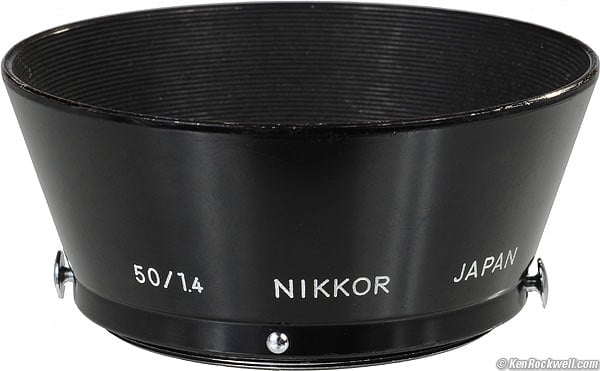
Original 1950s hood for 50mm f/1.4, 43mm springy thread.
Forget using either the original 1950s hood above, or the identical hood that ships with lens as part of the Nikon S3 Year 2000 Commemorative Edition. These primitive conical hoods block most of the viewfinder!
Far better is to use a reverse conical vented 43mm screw-in hood, which you can get for $5 over eBay. The $5 hoods shield the lens as well, but don't pop off, and don't block the finder because you can see through them.
Mechanical Quality performance top
Rear, Nikon 50mm f/1.4. bigger.
This is as good as anything ever has been: it's 100% all metal with engraved and filled markings.
The aperture ring rotates like a dream.
Sharpness performance top
This 50/1.4 is sharp and contrasty at all settings, whoo hoo!
There is some coma which leads to some minor corner blurring at f/1.4. It's much better at f/2 and gone by f/4.
Sunstars performance top
With its straight 9-bladed diaphragm, this 50/1.4 makes great 18-pointed sunstars on brilliant points of light.
Usage top
Samples Intro Specs Performance Usage Recommendations More
Ergonomics Removal Mounting Focusing Order of Operations
To remove the lens, set the camera to infinity (∞).
Push down the release lever (just to the left of the ∞ symbol on the camera).
Rotate the lens clockwise until the red tab on the lens until its opposite the big red dot on the camera body.
Lift straight out.
Mounting back to usage back to top
Set camera's focus to infinity (∞).
Line up the red dots on the lens and the camera body.
Gently push the lens straight in.
Rotate counter-clockwise until it clicks into position as shown above.
Focusing back to usage back to top
The lens is locked into the helicoid mount of the camera body. The lens has no focus helicoid of its own.
You may focus with the camera's own focus wheel. It's the sharply toothed wheel seen in the photo above, between the "Nikon" logo and the shutter release.
You may also turn the lens itself. Use the wider ribbed ring so you don't knock the aperture setting.
Order of Operations back to usage back to top
Nikon designed these cameras so you can do everything with just three fingers: focus with your middle finger, shoot with your pointer, and wind with your thumb.
Hint: especially on a tripod, it might be difficult to focus without knocking the aperture ring. Set the aperture first, then focus, shoot and wind. The natural progression of aperture, focus, shoot and wind follows a linear progression along the camera.
Recommendations back to top
Samples Intro Specs Performance Usage Recommendations More
This is a marvelous lens, and feels even better in actual use. It's sad that so many people are willing to sacrifice optical and mechanical quality for the convenience of Nikon's autofocus lenses instead of using this marvelous lens.
I'd use a 43mm 81A filter for color film, and a 43mm Orange filter for black-and-white film outdoors.
If you've found my research helpful, this free website's biggest source of support is when you use these links, especially this direct link to this lens at eBay (see How to Win at eBay) when you get anything, regardless of the country in which you live. Thank you! Ken.
More Information top
Samples Intro Specs Performance Usage Recommendations More
Nikon's 50mm f/1.4 specifications
Help me help you top
I support my growing family through this website, as crazy as it might seem.
The biggest help is when you use any of these links when you get anything, regardless of the country in which you live. It costs you nothing, and is this site's, and thus my family's, biggest source of support. These places have the best prices and service, which is why I've used them since before this website existed. I recommend them all personally.
If you find this page as helpful as a book you might have had to buy or a workshop you may have had to take, feel free to help me continue helping everyone.
If you've gotten your gear through one of my links or helped otherwise, you're family. It's great people like you who allow me to keep adding to this site full-time. Thanks!
If you haven't helped yet, please do, and consider helping me with a gift of $5.00.
As this page is copyrighted and formally registered, it is unlawful to make copies, especially in the form of printouts for personal use. If you wish to make a printout for personal use, you are granted one-time permission only if you PayPal me $5.00 per printout or part thereof. Thank you!
Thanks for reading!
Mr. & Mrs. Ken Rockwell, Ryan and Katie.
Home Donate New Search Gallery Reviews How-To Books Links Workshops About Contact
